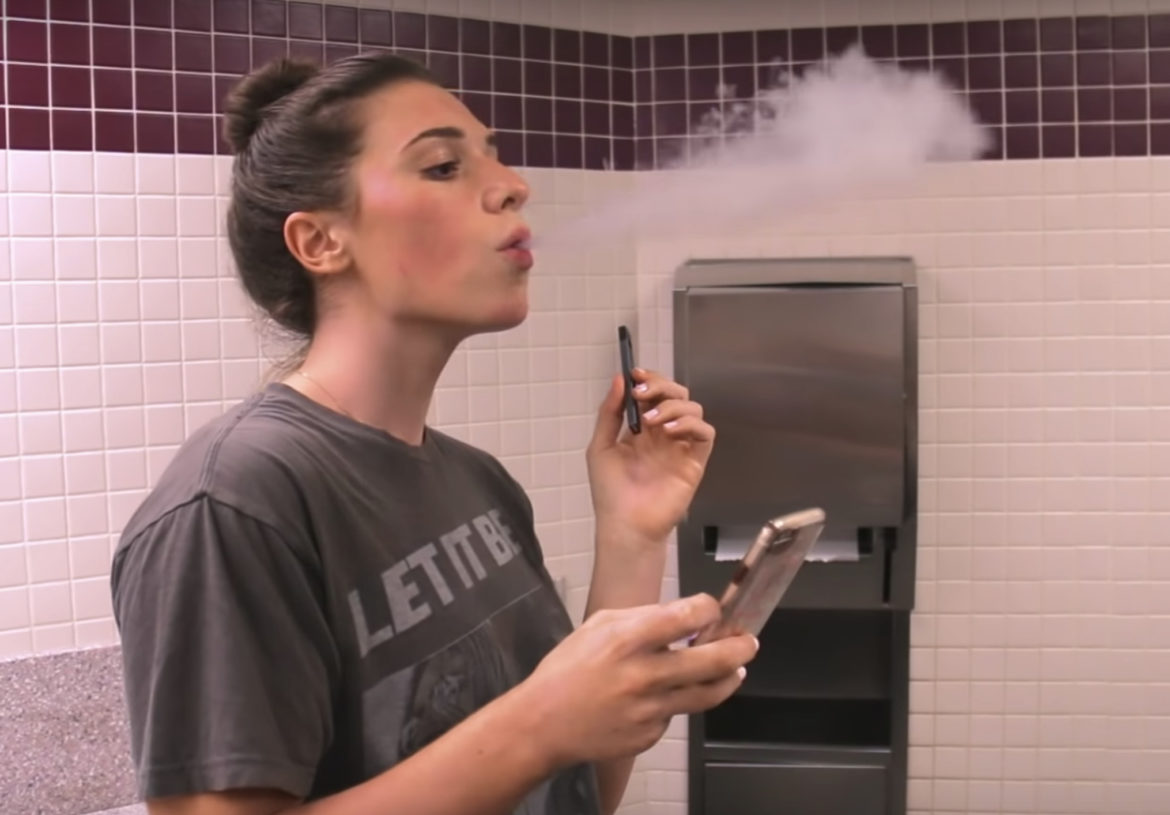In American schools, a hidden epidemic unfolds every three minutes when students are caught smoking. The CDC declares that more than 40% of high-school students and 20% of middle schoolers have used e-cigarettes. Health experts in the public sector call teens who vape a crisis. These devices are mostly nicotine-based (99 percent). Nicotine is an addictive substance that can rewire developing brains and can be the gateway to smoking cigarettes. Parents, teachers, and administrators are feeling more pressure to get involved. Vape detectors are an advanced technology tool that’s quickly becoming a necessity for all campuses. Triton, and 3D Sense are the two the most advanced vape detectors schools can use. They are more than sound an alarm.

How Vape Detectors perform: Accuracy without intrusion
A modern vape smoke detector such as the Triton ULTRA Safety Sensor doesn’t rely upon cameras or audio recordings ensuring complete privacy while still providing actionable information. It makes use of particulate sensors to examine the air in real-time. The device alerts staff via email or text whenever vape aerosols and masking agents, like strong perfumes are detected. False-positives remain extremely minimal. Administrators can be sure that all notifications require immediate attention.
A single unit can cover an entire bathroom, locker or hallway and hallway, which makes the installation of this device economical. Triton customers typically report that vaping levels drop within five weeks. Why is this? Data-driven deterrence. Triton Cloud Dashboard offers an “hotspot” of places vaping occurs most often. Principals are able to guide security personnel or hall monitors to the areas they’re most needed.
Beyond detection, occupancy visibility and Loitering control
Triton’s patent-pending technology of occupancy visualization sets it apart from other vape sensors. The ULTRA Sensor records the time spent in a room without recording any images or sounds. Administrators are able to view heat maps colored by color showing the times when bathrooms are transformed into social hubs that are prime for smoking and frequent contact with others that can cause respiratory diseases.
Stanford Medicine research underscores the dangers of vaping: students who use the drug are five times more likely to contract COVID-19. Vape detectors can enhance the air quality of schools by reducing the number of people in a congregation. This lowers the risk of transmission of all airborne pathogens. Following the outbreak, these devices have gained importance due to their dual benefits.
Data can be transformed into discipline and dialogue
Numbers tell a compelling narrative. The Triton reports module compiles the quantitative evidence of incident timestamps, places, frequency trends and locations that schools provide to the school board, parent groups, and even students themselves. The doubts begin to diminish when the campus has reported a 60 reduction in detections after detectors were installed. Parents will see that the students are committed; they are also aware of the consequences.
Educators amplify impact by announcing the presence of vape detector from day one. For example, the 3D Sense model is marketed as an anti-deterrent. The guidance materials recommend that students be made aware that the air itself is monitoring them. Peer accountability is the next step: the social cost of triggering an alert often proves more powerful than any talk.
A Multi-Front Strategy Schools Can’t Ignore
Vape detectors aren’t the only instrument that can stop the use of vape. They form part of a larger strategy.
Monitoring – Real-time alerts spot incidents as they happen.
Education: Evidence-based studies fuel anti-vaping curriculum.
Deterrence: Signs that are visible and consequences that are clear can change behavior.
Discipline – Hotspot data justifies targeted enforcement.
Support for Students – Schools provide tools for struggling students to quit smoking.
The CDC emphasizes that changing the trend requires “buy-in from educators, parents, and society.” Vape detectors are an important missing element: objective, immediate feedback that transforms good intentions into tangible outcomes.
Simple Deployment
Triton Cloud Dashboard makes it easy to sign-up your devices. Administrators add contacts, set alert thresholds, and customize notifications rules. Schedule a demo to experience the ease of use.
Conclusion
Each puff left unnoticed can lead to an addiction that lasts for the rest of your life. Each bathroom gathering that isn’t detected poses danger to your health and safety. Vape detectors such 3D Sense and Triton for schools are more than monitoring. They also offer intelligence as well as discouragement and proof of the progress made. Schools that have them installed do not simply react to the issue of vaping; they take control of it.
These tools can turn vague concerns into tangible wins. They can include sensors in every room, occupancy data that are private, as well as rapid alert systems. Do not put off the task in this day and age, where 40% of high school students have already tried it and the percentage of middle schoolers are increasing daily. It is your turn to be the first to know what the atmosphere in your school is telling you.